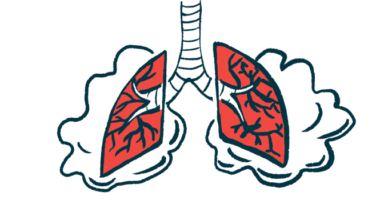Few with sarcoidosis see lung specialist within a year of diagnosis
Referral patterns vary by age, race, and gender in single-center study

Only about 1 in 4 people with sarcoidosis were referred to a lung specialist within a year of diagnosis, according to data from a single center in Ohio.
Because the lungs are the most commonly affected organ in sarcoidosis, seeing a pulmonologist is key for confirming lung involvement, monitoring disease progression, and guiding treatment.
Still, the study found referral patterns varied widely, and that Black men, white women, older adults, and people with more health problems were less likely to see a specialist.
“Specialty care for sarcoidosis is a gateway to advanced care that includes appropriate monitoring and therapy,” researchers wrote. “Further study of the referral process is needed to ensure equitable access to specialty care that includes monitoring and treatment for patients with sarcoidosis.”
The study, “Age, comorbidity, race and gender differences in referral to a pulmonologist among patients with sarcoidosis at a large academic medical center,” was published in BMC Pulmonary Medicine.
Understanding sarcoidosis and specialty care
Sarcoidosis is an inflammatory disease that can develop in any part of the body. It most often involves the lungs, where it is called pulmonary sarcoidosis. Previous studies have shown that race, sex, and social background can shape access to specialized care and influence outcomes.
“Once patients with sarcoidosis obtain a diagnosis, they then report difficulties finding knowledgeable providers as well as challenges obtaining medicines to treat sarcoidosis,” the researchers wrote.
Here, researchers at the Ohio State University examined whether socioeconomic factors influence who gets referred to a lung specialist soon after diagnosis.
The study analyzed medical records from 1,017 adults diagnosed with sarcoidosis at the Ohio State University Wexner Medical Center. Of these, 276 (27%) were referred to the hospital’s pulmonary clinic, which provides sarcoidosis care, within a year of diagnosis.
The median time from diagnosis to referral was 57 months — nearly five years — and from referral to visit was 1.8 months. Still, only 78% of referred patients were actually seen by a pulmonologist. The remaining 22% had no access to a lung specialist.
The researchers next looked at whether factors such as race, gender, age, smoking status, number of coexisting health conditions, and socioeconomic status affected the likelihood of being referred to a pulmonologist.
Statistical analyses showed Black men and white women were about 40% less likely to be referred than white men. Age also played a role: with each additional year, the chance of referral decreased by 3%. People with more medical problems — measured by the Charlson Comorbidity Index — were also less likely to be referred.
Those referred to the pulmonary clinic were more likely to have recommended tests, including pulmonary function tests, electrocardiograms (which measure the heart’s electrical activity), and chest CT scans (which provide detailed images of the lungs).
“The lung is the most commonly involved organ in sarcoidosis and characterization of lung involvement involves chest imaging and pulmonary function testing,” the researchers wrote. These tests are important for detecting complications of sarcoidosis in the lungs and heart.
Given the referral disparities seen at this Ohio hospital, these findings “highlight the importance of considering the impact of sociodemographic factors on referral to a sarcoidosis specialist,” the researchers concluded.







